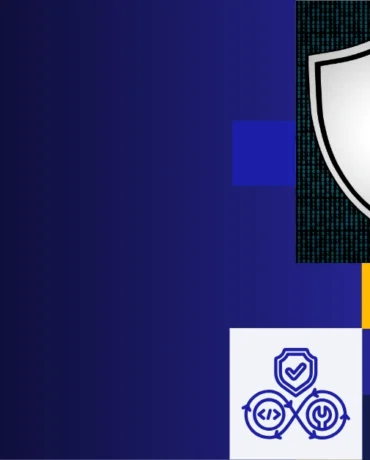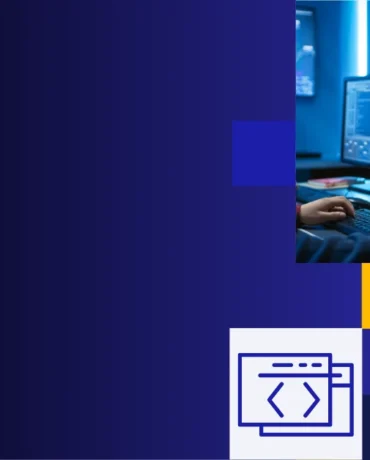If businesses want to effectively utilize the power of IoT in enhancing operation and productivity, then a robust IoT communication framework should be on the priority list of any organization.
But before achieving this, any business leader should first figure out how to pinpoint the complexities of IoT communication and tackle them head-on.
This article will be your gateway to understanding IoT communication complexities and possible solutions.
IoT communication framework
A standard IoT network will include a device system that signals back and forth through different means and protocols. This signaling will happen under multiple layers to transmit data from one to another to perform predetermined functions and send back information for reports. Below is a list of popular components within an IoT communication framework:
- Physical assets: Include sensors and actuators, which often find themselves at the receiving end of data. These devices collect all the information from the external environment firsthand and then transmit it to other components for analysis and processing
- Gateway: As the name name implies, this stage works as a gateway between data collected by the physical assets and the cloud. This step will use the help of both hardware and software to capture and store critical data in a timely manner.
- Platform: This serves as the storage location for data and information on a software suite or cloud service, where it awaits analysis and processing. This stage acts as a conduit, facilitating a seamless transition from the hardware layers of the IoT network to the end user, who interprets the data and determines its use.
- Connectivity: Finally, the deployment of communication technologies is the last component that binds all the above components together.

Source: Research Gate
The complexity of IoT communication among devices
As we have gained an overall understanding of how devices in an IoT project commonly interact, it’s time to analyze the challenges of maintaining coordinated and efficient communication between these components.
1. Sensor instability
Uninterrupted sensing is an essential part of an IoT communication system as this is where data is captured for examination and insights.
If businesses wish the information to be helpful in the later stages, accurate and precise sensing should always be maintained. However, many factors from the external environment can disrupt sensor integrity.

In order to address the challenges of sensor reliability, it’s recommended to deploy the radio frequency with the accompany of machine learning applications to yield a more stable and secure sensor response.
The recent development THz band is also believed to provide more business sectors with more reliable access to sensor reliability.
2. Many different communication mediums
With too many different mediums and components included, adopting various types of hardware, software, and protocols is inevitable. As such, it might pose a question of compatibility and coordination of these different mediums for your IT teams. Interoperability is also believed to be compromised when other communication mediums are involved.
One notable measure to counter this challenge is Web technology, which has evolved significantly, transitioning from the Internet of Things (IoT) to the Web-of-Things (WoT).
Several communication protocols, such as 6LowPAN, have been incorporated into this technology to further improve the interoperability and compatibility of devices within an IoT communication framework.

Source: Psilborg
3. Privacy and security
The risk of security always exist within a wireless IoT system, such as data breaches. It’s necessary to monitor data transmission to promptly identify and address vulnerabilities at their root.
To combat the high costs of cyberattacks, which can reach up to $4.45 million per incident, organizations are investing in new and advanced cybersecurity technologies.
These technological advancements span both hardware and software domains, specifically targeting privacy and security issues.
n terms of hardware, the use of Radio Frequency Identification (RFID) technology, as well as the incorporation of more recent iterations of 5G and other local network protocols, play a crucial role in addressing security concerns at the hardware level. Integrating a Key Management System (KMS) with a zero-trust network and blockchain technology swiftly mitigates privacy and trust concerns by bolstering security measures within software systems.
4. Power inefficiency
The massive and complex network of an IoT communication system requires a significant level of energy consumption. IoT also faced the challenge of having devices powered by batteries with limited capacity, making it harder to maintain IoT connections and real-time transmissions.
Researchers have extensively developed low-power technologies to support seamless communication with more sustainable energy consumption.
A few energy-efficient communication technologies that your business can consider include Bluetooth, Zigbee, and Long Range (LoRa).
Additionally, developers have adopted energy-aware routing mechanism techniques to extend network lifetime with lower energy consumption, such as 6LoWPAN, ZigBee IP, and Routing Protocol for Low Power and Lossy Networks (RPL).
Final thoughts
As promising and powerful as it has proven to be, the complexity of IoT communication networks is still facing intimidating challenges that can hinder seamless operation and cost your business money, manpower, and time to handle.
Your businesses should always keep in mind these pain points and tackle them early in the development processes to ensure seamless communication and operation with in the IoT system.


